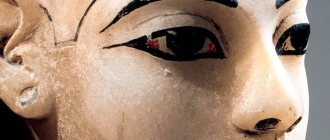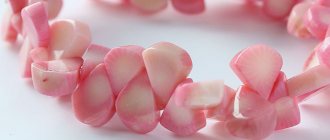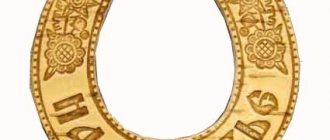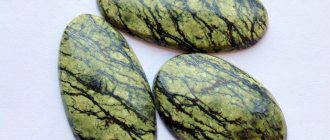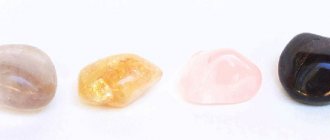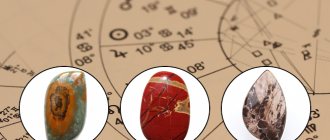Origin of Van Cleef & Arpels Rapid development Legendary products, collections, innovative inventions of the company Indian exotics Ballerinas and fairies Serti Mysteriex (Mystery Set™); Vitrage Mystery Set Multifunctional jewelry Cozy Minaudière Legendary bracelet Jarretière Brand It is difficult to give an example of a jewelry company that developed as rapidly as Van Cleef & Arpels did, and whose business was on a continuous rise. The company flourished even during crushing periods of global crisis and years of war. The company has always strived to catch the slightest fashion changes and instantly reflect them in its thematic series. But the most amazing feature of Van Cleef & Arpels is that the company’s products have always been beyond fashion and time. Jewelry that was popular decades ago is also relevant today. It is impossible to compare them, ancient and current - they are equally beautiful and modern.
Origin of the company
The company was born from the union of two wealthy commercial families belonging to the Parisian bourgeoisie of Israeli origin. Solomon Van Cleef and Solomon Louis Arpels were related by marrying the daughters of the Parisian clothing merchant Mr. Mayer. Both were engaged in the sale and supply of textiles, fabrics and other goods. Their children, cousins, Alfred Van Cleef and Esther (Estelle) Arpels were married on June 9, 1895. They were a beautiful couple - he was 23, she was 18 years old. Handsome Alfred was captivated by a charming petite brunette.
Photo of the couple taken in 1896, their marriage certificate dated June 9, 1985.
The family joint stock company Van Cleef & Arpels arose back in 1896 between Alfred Van Cleef and his father-in-law Solomon Leon Arpels. After his father's death, Alfred worked in his stepfather's company, which supplied precious stones. And so the activity of the family enterprise of Van Cleef and Arpels became the sale of jewelry. Perhaps these were simply brokerage, that is, intermediary deliveries. After the death of Leon Arpels in 1903, his place was taken by his son Solomon (1880-1951), who took the name Charles in 1926. But the true appearance of Van Cleef & Arpels is considered to be 1906, when the company's first jewelry store opened on Place Vendôme. Two other Alpres brothers, Julien (1884-1964) and Louis (1886-1976), joined the company in 1914.
Alfred Van Cleef in 1937
The story about the management of numerous branches and the transfer of shares through inheritance is quite long and confusing. It should only be mentioned that the marriage of Alfred and Esther produced the only daughter, Rachel Renee (1896-1942), who had no children. After Alfred Van Cleef's death in June 1938, all of his shares in Van Cleef & Arpels were bequeathed to his daughter. A socialite and great fashionista, having been widowed, she actively participated in the affairs of the company from 1926, in fact she was the artistic director of the VCA from 1926 to 1940, and had a considerable influence on the selection and creation of models. Even the great VCA designer Rene Sim Lacaze thought so and was not the only one in such a statement. Rachel was the only heir on the Van Cleef side. After her death, the shares were distributed among members of the Arpels family, including Esther.
Estelle Van Cleef was, of course, an outstanding person who performed more than just the role of a wife. She was actively involved in social activities. She worked as a nurse in the First World War, participated in the anti-fascist resistance in the Second World War, was awarded the French Red Cross medal in 1916, the Gold Medal for the fight against the epidemic in 1918, the Military Cross in 1919, the Legion of Honor in 1921. But she most likely did not participate in the affairs of the company and did not keep books, as many publicists claim. There was no verbal confirmation of this by employees or written mentions among the archives. She was always referred to as Esther in all documents.
A watercolor portrait of Madame Esther Van Cleef (1877–1960) taken in 1954 (she is 77 years old here) and a photograph of her daughter Renée from 1942, when she was 46 years old.
Modern jewelry
Vintage jewelry
Antique jewelry
Rapid development
Van Cleef & Arpels was one of the first jewelry stores located on Place Vendôme. Then this place was a symbol of Parisian luxury, an international landmark of French elegance. Vendôme united the most prestigious banks, the best restaurants, the most sophisticated shops and salons. Opening a boutique here was an excellent strategic decision. Room twenty-two was located directly opposite the luxurious Ritz Hotel, where Russians, European aristocrats and American millionaires stayed.
22 Place Vendome, one of the first photographs of the store, taken in 1910
By 1929, Place Vendôme had become a real parking lot. The cars of the richest and most famous people stopped here, which was very conducive to trade.
Before the First World War, one after another, branches of the company were opened in the best locations of the most fashionable resorts in France.
In Dinard, the first company branch began operating in 1909. The pizzeria building, which has a mosaic inscription in front of its entrance, once housed a VCA boutique.
1912 Branch opened in Deauville. It was already a fairly famous resort and car racing destination. Since 1912, construction began on new grandstands at the race track and several luxury casinos. The company's store was located in the famous cafe La Potinière and was open during the holiday season from spring.
1910 Branch opened in Nice.
In 1916, a branch was opened in Vichy. In 1913, Louis Arpels joined the company and settled in this resort town to manage the department.
1920 In Cannes, on rue Le Couturier Poiret, the branch was located next to the famous Carlton Hotel.
Around the same time as in Cannes, a store was opened in Lyon at 47 Rue De La République. Photo from 1934
In 1927 Branch in Le Touquet. A fashionable resort, favored by world celebrities. One of the best hotels in the city becomes an international meeting place for the business elite. After the war, the city was rapidly being built up with magnificent hotels, villas, and palaces. Unfortunately, this beach paradise did not survive the crisis of 1929.
In 1933, a branch in Roubaix at 7 Rue was opened in the building of an industrial club.
In 1935, a company store was opened on the territory of the Opera Garnier casino in Monte Carlo.
Claude, the eldest son of Jules Arpels, who studied at Harvard for several years, represented the company's stand at an exhibition in New York in 1939, after which he remained in the United States and founded the company's first office in Rockefeller Center. It was not safe to remain in Europe and Jules, Solomon Arpels and most of the family moved to the United States. Louis Arpels, Claude's uncle joined later, at the beginning of the war, actually fleeing persecution and oppression of French Jews by the Nazis. He seized 10 kilograms of gold and a large batch of precious stones; the majority of the company's shares remained in Paris. It was Claude and Louis Arpels who started a successful business in America. In 1840, a branch was opened in Palm Beach.
Van Cleef & Arpels famous store opened in 1942 at number 744 on Fifth Avenue in New York.
Louis Arpels in 1940. His nephew Claude in 1947 with his second wife of Egyptian origin. As soon as Paris was liberated from the Nazis, Claude rushed to France to restore the family business.
Other branches in London, Beverly Hills, Los Angeles, San Francisco, Hong Kong will start after the war.
Legendary products, collections, innovative inventions of the company
The splendor of jewelry is created by craftsmen, talented jewelers and artists. The best specialists have worked for Van Cleef & Arpels at different times. This is, first of all, Rene Sim Lacaze, who devoted his entire life to working in the company, the author of many jewelry technologies and projects patented by VCA. Langlois, whose workshops worked only for Van Cleef & Arpels. Workshops of Peri and Son, brothers Sellier Dumont and Dumont Bouchard, Freres. , Rosenfeld and Rubel, Orchard. Masters Albert Mirra and Peri Semnar, who worked for the Zip series.
In Paris at the beginning of the 20th century, exhibitions of Japanese, Chinese, Indian works of art, and Egyptian antiquities were held. The exhibitions aroused great interest and admiration and had a significant influence on European art and fashion. Europe was fascinated by travel, the exoticism of distant countries, and the romance of archeology. This was immediately reflected in the Van Cleef & Arpels themed series of jewelry of the 1920s and forever remained the motif for many subsequent collections.
Indian exotica
The magic of Indian creativity had a fascinating effect on many Van Cleef & Arpels customers, as well as on the company's designers and its owners. Therefore, the exotic motifs of this country were repeatedly repeated in products. India is a country not only of inexhaustible inspiration, but also a source of the best precious stones, in search of which the brothers Claude and Pierre Arpels traveled there several times. From one such trip in 1956, Claude brought back the famous 114-carat Blue Princess sapphire, which later became an adornment in the necklace of the then famous socialite Florence Jay Goodle.
Sometimes inspiration from Hindu architecture has been transformed into objects with very unusual shapes, such as this bracelet made in 1924. From the archives of Cleef & Arpels.
One of the firm's clients, the famous socialite of the time Daisy Fellows, traveled to India many times in search of beautiful gemstones and brought back many ideas for her jewelry. Based on the lady’s descriptions and sketches, Van Cleef & Arpels produced the most beautiful works for her and their stores.
1926-1928 The Manchettes necklace and bracelets with emeralds and diamonds are part of the pieces commissioned by Daisy Fellows.
The company's craftsmen and designers managed to understand and rethink the cultural features of this country so subtly that the company received numerous individual orders from eminent persons. The impeccable purity of the stones, excellent jewelry craftsmanship and successful stylization of traditional motifs have attracted many Indian princesses and maharajas as exclusive clients. The company produced a lot of jewelry for them at different times.
Princess Maharani of Baroda was one of VCA's most famous Indian customers. She was nicknamed "India's Wallis Simpson" for her insatiable passion for jewelry. She greedily sought out, bought and ordered the most magnificent and rare items with the best stones. Her collection included more than three hundred pieces of jewelry, ranging from items from the Mughal era to works by Van Cleef & Arpels
1951 page from the special order book of the Princess Maharani of Baroda and a necklace made to her order. Private collection.
The art of India regularly inspired the company's designers. The topic remains relevant to this day.
The necklace from 1970 and the brooch from 1966 imitate amazingly fine Indian embroidery.
This Panka Set necklace with clips from 1974 is a famous example of high jewelry, where Indian motifs are also clearly expressed. Round and oval turquoise cabochons, diamonds, mounted in yellow gold.
The 2011 Bals de Légende collection once again embodied the fairy tale of the wealth and luxury of Indian palaces during the times of the Maharajas. The combination of white and yellow gold, diamonds, turquoise, purple and pink sapphires, peridots, and a large 30.76-carat yellow sapphire artfully reproduce the stylized head of an elephant in the Makara Ring of this collection.
Ballerinas and fairies
During the dark war days of the 1940s, a wonderful collection of ballerinas emerged. It has become iconic for Cleef & Arpels, as well as a symbol of joy and hope in difficult times. The initiator of the series was Louis Arpel, a passionate fan of ballet. Under his leadership, the New York branch created an entire troupe of ballerinas. Their poses captured various ballet steps, their costumes sparkled with diamonds and were accented with other precious stones, and rose-cut diamonds defined their faces. And so began a long ballet performance from Cleef & Arpels, lasting from 1941 to the present day.
Sketches of the first collection of ballerinas. From the Cleef & Arpels archives.
1941 Espagnole dancer. This brooch was the first of the signature troupe. Collection Cleef & Arpels.
Examples from a series of ballerinas from the 1940s.
Three ballerinas from the 2007 collection “Ballet of Jewels”:
Eloise with emeralds, Silvia with only diamonds and Gloria, whose tutu is designed in the form of a rose, accented with rubies.
Fairy jewelry began to appear in 1940. The source of inspiration was American comics of those years. Fairies with the wings of butterflies and dragonflies did not resemble the female figures fashionable during the Art Nouveau period. These are tiny fairy-tale creatures that live in the cups of flowers. The products were very popular with customers. Ballerinas and fairies were worn in the form of brooches, pendants, and hair ornaments. They became equally a symbol of the company, their motifs were repeated for numerous collections and individual items.
1940 One of the first fairy ornaments, “Lady Dragonfly,” was in production for several years.
“The Spirit of Beauty,” a brooch commissioned in 1944 by Barbara Hutton, accented with diamonds, emeralds, and rubies, became a kind of talisman for the company, personifying the spirit of creativity.
Fairies from the 2003 collection “A Midsummer Night’s Dream”
Motifs of ballerinas and fairies in the Lady Arpels Ballerine Enchantee watch collections 2013
Serti Mysteriex (Mystery Set™); Vitrage Mystery Set
Jewelers have always strived to create the surface of a piece from tightly fitted gemstones, making the fastenings more invisible. In 1933, Langlois first developed the Serti Mysteriex hidden fastening technique, but it was patented as the Mystery Set much later. The back side of the stones, in which tiny grooves are made, is held in place by a mesh of precious metal, visible only along the contour of the object. This method of fastening marked the beginning of a new aesthetics in jewelry design. The company created incomparable works, shining with a continuous surface of precious stones. In 1938 the technology was improved for use on curved surfaces and patented as the Vitrage Mystery Set.
Serti Mysteriex technology
Two peony flowers, closed and open, make up the Pivoine set (1937) and are a masterly example of the Serti Mysteriex technology. This exceptional set is created from 706 rubies (71 carats) and 239 diamonds (29.72 carats) set in platinum. Mahmoud Fakhri Rasha, Egypt's ambassador to Paris, bought it in 1946 for the sister of the Egyptian King Farouk, Princess Fauzia. The closed peony is now among the Cleef & Arpels collection of masterpieces, the open one is kept in a private collection.
Pieces in the Serti Mysteriex technique from the private collection of Cleef & Arpels, shown at the Galliera exhibition in 1995. The exhibition, organized by the company's president, Jacques Arpels, presented more than 350 signature jewelry from different years. The show then took place in New York in 2011, Shanghai in 2012, and again in Paris at Les Arts Decoratifs in 2012.
The Oiseau Mystérieux, one of the most captivating pieces in the Paris collection, is made using the same technique. The product is transformable: the tail feathers of the bird are removable and the decoration can be worn as two different items.
Parrot from the High Jewelry collection Les Voyages Extraordinaire. The Mystery Set method is used to specifically highlight the whiteness of the baguette diamonds and the color gradation of the sapphires around the pear-shaped diamonds on the bird's tail.
Using the Mystery Set technique, the Coquillage ring from the Seven Seas collection is textured with rubies that reproduce the surface of a shell.
Multifunctional decorations
A special technique that allows you to make several pieces out of one piece has always attracted the company’s customers. The process of transforming a product is like a creative game and allows you to diversify your wardrobe. If brooches have one pin, then the clips have two, and pendants require special fastenings. Many Van Cleef & Arpels jewelry contains all the necessary devices for three different types of products, they can be used as a brooch, pendant, hair clip. A similar technique, not uncommon in jewelry, has been used since the 19th century. But it is Van Cleef & Arpels brooches that are most often made in this way. They are called clips, and it is difficult to find a similar Russian-language definition for them. Clips have always been present in every collection of the company. Some of them could be converted into a buckle for a hatband or belt. Almost all decorations in the form of fairies, ballerinas, birds, flowers, animals are clips. Over time, Van Cleef & Arpels began to make items with removable parts that can serve as earrings or clips, pendants, complementing the main product. Not only brooches, but also bracelets, necklaces, and tiaras can be transformed.
A beautiful Walska clip brooch, created according to an exclusive order for one of the company’s clients. The bird's wings are removed and transformed into a pair of earrings. The yellow pear-shaped diamond can also serve as a stand-alone pendant.
This large Ganna Walska stone appeared at Sotheby's auction in 1971. The name was given in honor of the opera singer Hanna Walskaya, who owned the diamond in the 1930s; she wore it as a pendant. The customer asked Van Cleef & Arpels to combine this magnificent stone with a brooch. In 1972, the image of a precious fairy bird soaring over Place Vendôme adorned the company's catalogue.
Clip from 1925 “Hummingbird”. Platinum, diamonds.
Clip 1945 “Lace Bow”. Platinum, gold, diamonds.
Platinum video 1967 “Centrefoil”. Oval and round cut rubies (15.77 carats), marquise and baguette cut diamonds (16.35 carats). The decoration was made for the famous opera diva Maria Callas according to her special order.
The metamorphosis of this Indian set from the collection of Princess Begum Aga Khan, a perfect example of the multifunctional creations of Van Cleef & Arpels. If you unfasten the clasp, the necklace becomes two bracelets. The removable pendant can be used as a brooch or hair decoration. The unique stones made this jewel exceptional: 44 18th century emeralds (478 carats) and round cut diamonds (52 carats).
In 1938, the company patented Passe Partout products that can be transformed into items for several purposes. It was a flexible gold cord with a floral decoration made of precious stones, which was rigidly fixed in the position that the owner wanted to give it. A special technology allows you to roll the chain into any shape of a necklace, choker, bracelet, belt, and the flowers-clip can be removed and also multifunctionally used. The Passe Partout became the most famous and sought after product from the late 30s and throughout the 40s.
Metamorphosis options Passe Partout
In the 1930s, zippers began to be used on military, naval and flight uniforms. It was not yet popular for civilian clothing. In one of their frequent conversations, Earl Spencer Winfield asked Rachel Renee Van Cleef to come up with a kind of flexible collar in the form of a “zipper.” The future Duchess of Windsor saw such a fastener on the clothes of her first husband, a pilot. Rachel's imagination went further, and in 1938 a sketch of the Zip product, both a bracelet and a necklace, appeared. But the project was implemented only in 1951. The design was always considered very original and became a very famous product of the company. The quantity and style variety of the model throughout the 50s was limited and therefore such examples appear at auctions extremely rarely; no more than ten of them were exhibited during the entire period.
The first Zip in yellow gold and diamonds, created in 1951. Van Cleef & Arpels Archives.
The same item auctioned at Sotheby's in 2003 with a starting price of €66,175.
Zip 1951 Platinum, yellow gold, rubies, sapphires, emeralds, diamonds. Private collection.
This modern take on the Zip in white gold, diamonds and sapphires was worn by Margot Robbie to the 2015 Oscars.
Pretentious Minaudière
Translated from French as “pretentious,” Minaudière is essentially an elegant predecessor to the modern toiletry case. This invention was VCA's great contribution to the history of jewelry design. The models have not been produced by the company for a long time and are of particular interest in the world of antiques. Small precious boxes were considered the ultimate in elegance, were an essential accessory for an elegant dress and contained all the necessary accessories for a modern lady, including cigarettes, a lighter, a watch and a notebook. Women wore Minaudière in flirty satin or velvet pouch bags.
Minaudière 1938 Gold and rubies.
Travel bag 1935. Considered a masterpiece made of gold, enamel, black lacquer, decorated with diamonds.
Other examples of Minaudière
Legendary Jarretière bracelet
Numerous products of the company are associated with the names of titled and famous persons. This is an endless series of impeccable products that Van Cleef & Arpels have adorned many of the most famous and rich people on the planet. But if among such jewelry we had to choose the most remarkable item, it would certainly be the Minaudière bracelet by Marlene Dietrich.
Around 1937, the film star ordered a bracelet from the company's Paris boutique. The actress was friends with Louis and Helen Arpels. Marlene's unique image inspired Louis to create a special piece of jewelry, and the result was the Jarretière piece of jewelry. The bracelet was too large for the actress’s fragile wrist and therefore became even more noticeable, catchy, and impressive, especially emphasizing Marlene’s sophistication. Jarretière became a part of Dietrich’s life; she often takes photographs with it, wears it for the filming of Hitchcock’s “Stage Fright” in 1950, and prefers it to other jewelry. It was a kind of talisman for the great actress. The last 17 years of Dietrich's life were difficult, gradually she had to sell off her jewelry. But the bracelet was the only item that the actress did not want to part with. However, in 1992, the jewelry was auctioned at Sotheby's for $990,000 and has since been in a private collection. Soon after this, the actress died.
Marlene Dietrich in her favorite jewelry. The platinum Jarretière consists of several structural fragments. Cushion-shaped rows of rubies are set with baguette-cut diamonds, the clasp is formed by a petal of large diamonds, and the hinged strap contains round and baguette-cut diamonds.
The products shown do not fully convey the style of Van Cleef & Arpels. This is an insignificant fraction of the company's works. But it was these individual items, collections, and innovative technologies that became milestones in the history of the company.
About using a talisman for success
Luck keeping pace with you will lead you to a rare and amazing plant. Quatrefoil occurs in one in 10,000 specimens. Pick it carefully and bring it home.
As a talisman it can be used in several ways:
- To attract financial well-being carry the quatrefoil with you ; a good place for it would be your wallet.
- To attract your soulmate or meet your love in the near future, place the plant in your shoes before leaving the house.
- Wrap the picked plant in blue fabric and make a decoration out of it by attaching a string. (Make it into a decoration by first wrapping the leaf in blue fabric and hanging it on a string.) A unique pendant will relieve melancholy, sadness or depression.
- Place the quatrefoil under the glass and secure. Hang it opposite your front door to protect your home. A plant talisman will protect you from envious people, damage, quarrels, and unkind guests.
- Eat a flower together and thus strengthen the couple’s relationship and make it more harmonious.
To create a powerful amulet, you need to pick a quatrefoil at dawn, then climb to a hill or hill. When the sun rises, you need to throw a petal first to the north, south, then to the west and east. At the same time, you should quietly invite all 4 of the above elements to you, so that their power fulfills all desires and protects. When you complete the ritual, pull out a regular plant (white is better). As a symbol of unity with all the elements, keep it with you. A silver pendant in the shape of a clover will perform the same function.



